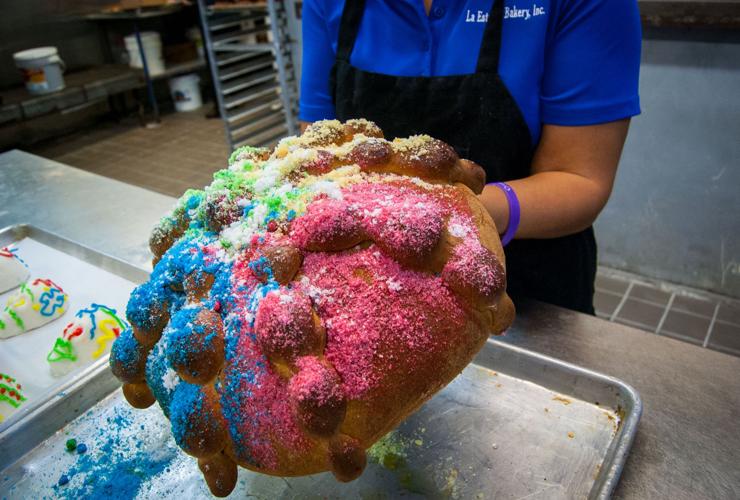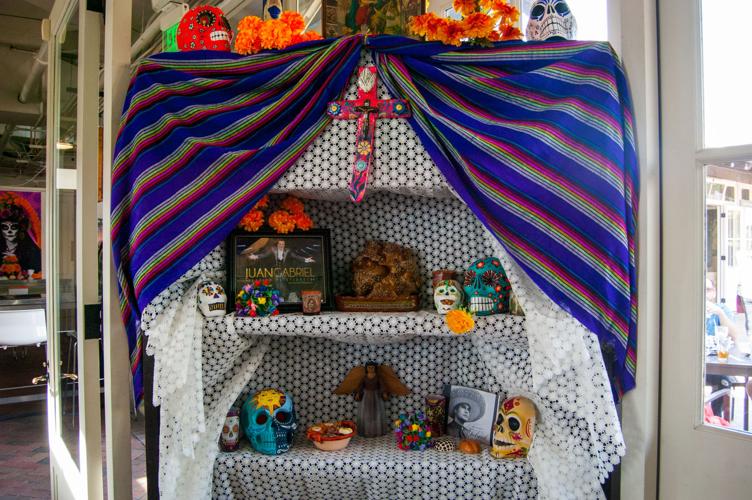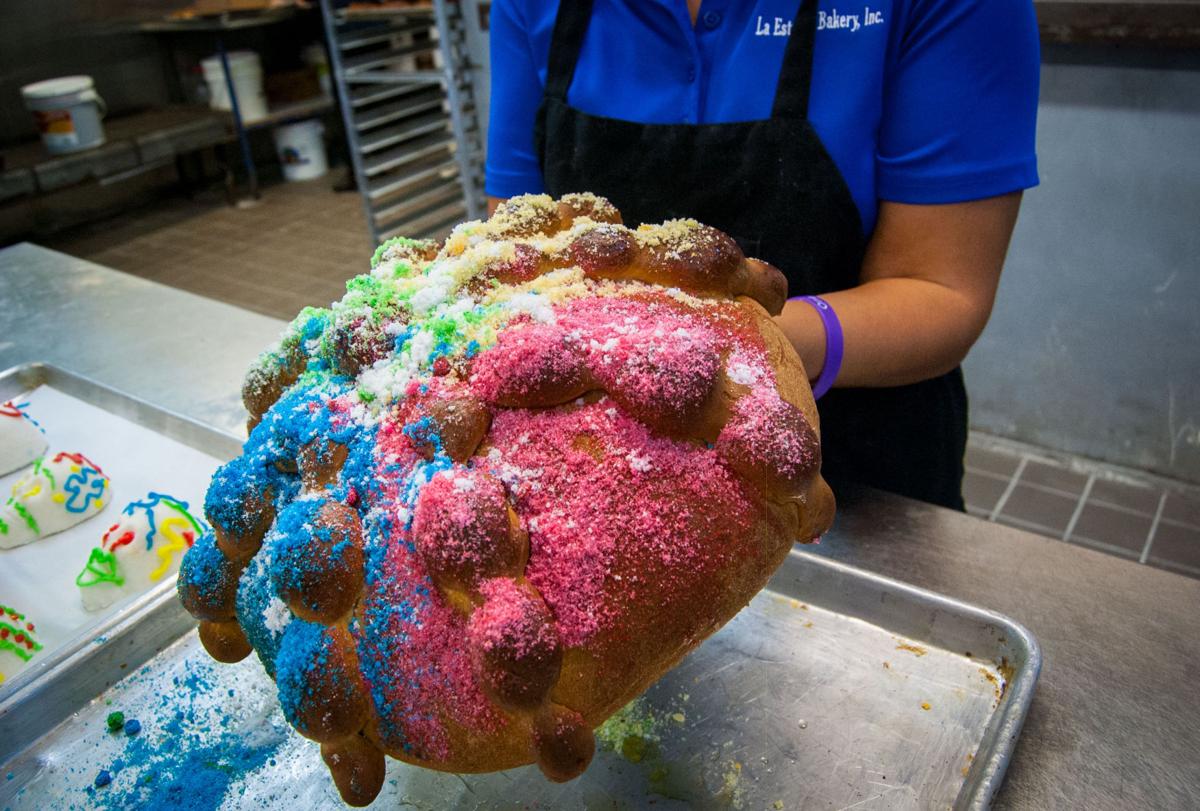Every October for the past 30 years, a trio of bakers has stood around a table in the back of Tucson's La Estrella Bakery and made pan de muerto with their hands. They mix flour with sugar, cinnamon, salt and yeast to make a basic pan dulce sweet bread, with a little added citrus, whatever they have onhand at the time.
When the dough is ready, they mold it into flat pucks that are decorated with strings of bumpy bones, symbolizing the deceased. They put a single sphere on top, a bone from the hand.
"You need to work well with your hands," says Isabel Montaño of the Franco family, which has owned the South Twelfth Avenue staple since Halloween of 1986. "You cannot have fear, because when you're tense it gets into the dough."
The bakers Rafael Espinosa, Cecilio Montenegro and Isabel's uncle Guadalupe Franco then throw the bread into a large stone oven from the 1930s and leave it for about a half an hour. It emerges, brown and bubbly and crisp on the outsides, ready to be dusted with colorful sugars.
La Estrella Bakery makes several hundred of these sturdy sweet breads every year during the Mexican holiday Dia de los Muertos today and tomorrow. Since the Francos are from Jalisco, theirs are slightly different and more colorful than the white Sonoran versions you might see elsewhere, but the tradition is the same.
According to Isabel, pan de muerto shows the intersections between the indigenous origins of the holiday and the Catholic culture that has transformed it. In late October, Mexican families will use the bread in elaborate three-tiered altars in their homes, which are speckled with religious symbols and marigold flowers. The different levels symbolize the earth, limbo and the heavens.

A colorful shrine at La Estrella's second location inside the Mercado San Agustin, 100 S. Avenida del Convento.
"It's believed that on The Day of the Dead, that soul will come back and have what they love to eat, play what they love to play, listen to what they like to listen to, and then they're gonna be thirsty, drink their water, and then they're going to celebrate," she said.
The bread is also taken to the cemetery on Dia de los Muertos, where families will get together and talk about their loved ones while they play mariachi music and drink hot chocolate. The celebrations will even continue in the home later that night or the next day.
Even if you're not celebrating Dia de los Muertos with family, it's still okay to purchase and enjoy the bread, she said. Many people will take smaller versions to All Souls Procession, because all that marching makes you hungry.
"There's no real right or wrong, it's just hearing the knowledge of what it's meant to represent."
La Estrella Bakery, 5266 S. 12th Ave., will sell its pan de muerto until about mid-November. But if they've already sold out for the day, try one of these three other Tucson bakeries.
- El Triunfo Bakery, 6348 S. Nogales Highway
- El Rio Bakery, 901 N. Grande Ave.
- El Herradero Carniceria y Panaderia, 4211 E. 22nd St.






